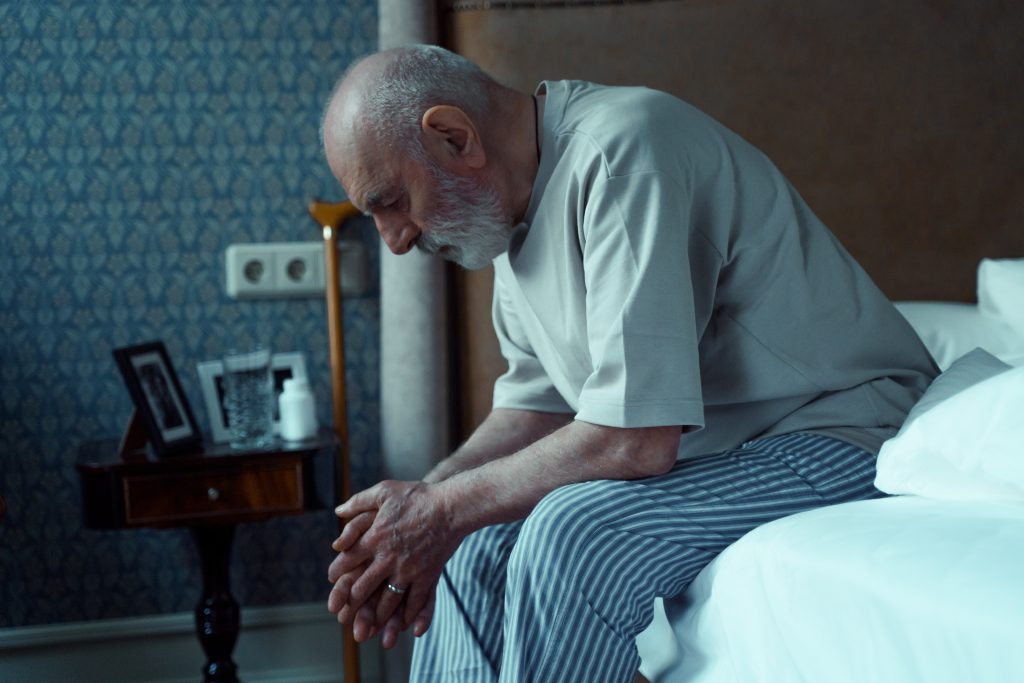
Close
The number of people experiencing homelessness has grown both locally and nationwide in recent years, spurred by income inequality, an affordable-housing crisis, and the ripple effects of the pandemic. Within this wave, a concerning trend has quietly grown – the share of older Americans experiencing homelessness.
The leading Baby Boomers turn 73 in 2023 while the youngest begin to enter their 60s. Most of these folks live alone or with only their spouse, and the majority own their homes. This might sound like it translates to a more-stable living situation, but rising costs and stagnating wages across the board make that harder to achieve.

Without cohesive local support and statewide investments in Medicaid and Medicare, this vulnerable population will continue to see increased movement toward homelessness.
Nearly 90% of adults, 65 and up, receive Social Security benefits, according to the Social Security Administration. A quarter of those recipients rely on that benefit – which maxes out at $841 for an individual – for more than 90% of their monthly income.
Among homeowners, most of those homes are now at least 40 years old, producing expensive maintenance challenges. At the same time, property taxes have risen sharply nationwide regardless of the aging nature of these homes. For those who do rent, costs are up more than 30% in some cities. Tulsa’s average rent costs $886 per month – more than the maximum Social Security benefit. Plus, no one escapes the pinch of rising costs due to inflation.
For those whose monthly income relies on little more than Social Security benefits, these costs all add up to the very real possibility of losing a home or apartment. But costs alone are not the only factor. About 85% of older adults manage at least one chronic health condition, and 60% have at least two. For many, the difficulty of managing these conditions complicates returning to the workforce to make ends meet. As these conditions progress, they can also make living alone an increasingly dangerous choice.
To make matters worse, once someone does lose their home, the experience of homelessness causes health conditions to deteriorate much faster than those who have a home.
To meet the needs of this rapidly growing population, some cities shifted focus. In Arizona, for example, the homeless resource hub where most people access case management includes Justa Center – a drop-in center for day services and resources designed specifically for seniors aged 55 and up. This project began when the Rev. Scott Ritchey saw the way the overflow shelter that he volunteered for in 2006 offered the exact same services for every adult 18 and older without recognizing the distinct needs, limitations and barriers to housing experienced by people of different age groups.
Today, Justa Center integrates their case management services with healthcare services and works to ensure that older adults housed through their programs are provided the support they need to be successful.
Currently, Tulsa’s systems operate much like the shelter which inspired the Rev. Ritchey. City Lights Foundation, which operated a COVID-quarantine hotel until closing earlier this year, provided seniors and those with severe physical disabilities a safe shelter option and wraparound services specific to their needs.
While City Lights Foundation continues to operate Night Light, a weekly relationship-building setup where volunteers cook meals and offer donated items to those who attend, the absence of their hotel program is felt deeply – and presents an opportunity to build upon their work.
Another way Tulsa can build its capacity to serve older adults is through partnership and communication with area healthcare providers. Through a United Way Social Innovation Grant, Housing Solutions has partnered with both Legal Aid Services of Oklahoma and Hillcrest Medical Center to establish a medical-legal partnership that helps people access stable housing and long-term medical care after being discharged from the hospital.
Increased support for Medicaid & Medicare statewide can allow people to stay in the homes they already live in – rather than moving to state-funded facilities like nursing homes. When Medicaid agencies are freer to provide in-home health care, older adults maintain independence and the burden on hospitals and nursing homes is reduced.
All of this depends upon the availability of affordable housing for older adults to live in. With Tulsa’s current limited housing stock and the competitive rental market, finding homes for those experiencing homelessness is increasingly difficult, and broad partnerships become even more critical.
Housing Solutions © 2020. All rights reserved.

